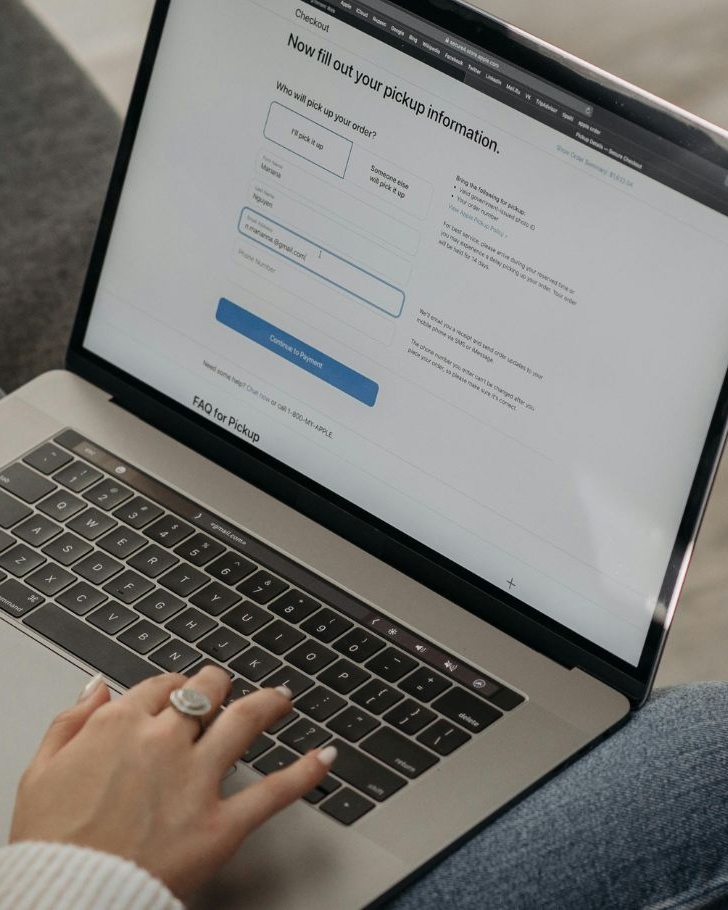How to start your B2B e-commerce project: 10-step guide

A successful B2B web store removes friction for customers and admin work for your team.
The 10 steps below walk you from first idea to first order. No fluff, no shortcuts, just a proven roadmap.
This guide is also a useful reminder checklist if you’re about to start a replatforming project for your current online store.
Whether you are a small business or a large company, every successful B2B e-commerce implementation starts with the following 10 steps. These are based on the combined expertise and experience of our Project, Sales and Customer Success Managers, here at Sana Commerce.
Step 1: Define your “why”
Step 1: Define your “why”
Start with clear business goals that everyone can rally behind.
For instance, Y%+ within 18 months
X% of repeat orders placed online.
Cut manual order entry by Z%
Quick win: Read our blog on SMART e-commerce goals to capture, rank and socialize your objectives.
Step 2: Know your customers inside out
Talk to your buyers. Ask why and how they purchase today:
- Pain points: stock visibility, contract pricing, multi‑address shipping
- Buying habits: desktop vs. mobile, working hours, approval flows
- Desired outcomes: faster re‑ordering, self‑service invoices, live shipment tracking
Use these insights to design journeys that feel effortless.
“E-commerce is most successful not just when it aligns with your overall company strategy, but when it is part of your overall strategy.”
— Jacco Hop | Manager Pre-Sales at Sana Commerce
Step 3: Build your A-team
Step 3: Build your A-team
Assign clear roles early so nothing slips through the cracks:
Removes roadblocks, approves budget
Timeline, scope and stakeholder updates
Prioritizes features, owns KPIs
Data flows, integrations, security
Content, launch campaigns, training
Feedback loop, FAQ updates
Do you know what your B2B clients want?
Do you know what your B2B clients want?
Get the full insights from our B2B Buyer Report.

Step 4: Align internally
Before writing a single line of code, make sure everyone sees the upside and knows what’s expected of them. Kick off with a workshop where each department shares what success looks like, then keep momentum with a clear comms plan.
Ask each group:
Executive leadership: Which business outcomes will make this project a visible win, and how will we track them?
Sales: How will online prices and discounts reflect existing contracts—and how will reps be rewarded for web orders?
Finance: What payment methods, tax rules and credit limits must be live on day one?
Operations & logistics: How will we handle split shipments, partial deliveries or backorders without adding manual steps?
Customer service: Which routine questions can self‑service handle immediately, and when should a human step in?
IT/ERP: Which data and integrations are mission‑critical for the MVP launch?
Change champion: Who owns employee training, feedback collection and adoption KPIs?
Quantify the value of e-commerce for your business
Quantify the value of e-commerce for your business
Use our guide on calculating TCO for your organization.

Step 5: Choose the right platform
When you prioritize solutions that integrate natively with your ERP, you benefit from:
- Real-time data syncing: Inventory, pricing, credit limits
- B2B must-haves: Multiple catalogs, approval flows, customer-specific assortments
- Total cost of ownership: Licenses, hosting, maintenance and upgrades
- Vendor roadmap and support: What’s next and who will help you when you’re stuck
Step 6: Set scope and MVP
Step 6: Set scope and MVP
Go live with the must-haves and then add the nice to-haves once you’re generating revenue.
Typical MVP features:
Contract pricing and volume discounts
Online re-ordering from past purchases
Real-time stock levels
Self-service invoices and shipment tracking
Tip: Define how success will be measured for the MVP (for example, x orders in the first 30 days)
Leverage the power of personalization on your web store.
Leverage the power of personalization on your web store.
Learn how with Jason Hein in our on-demand webinar.

6. Create a realistic timeline
6. Create a realistic timeline
Work backwards from your target launch date. Factor in:
Discovery and requirements
Platform selection and procurement
Implementation and integrations
Training and soft launch
Buffer 15% for surprise changes, because they will happen.
“When every department can point to a personal win on the project board, approvals go from months to minutes.”
— Guy Paton | Customer Success Manager at Sana Commerce
Step 8: Budget for success
Treat budgeting like assembling IKEA furniture: skip a peg, and the shelf collapses.
Make sure to account for:
- Platform and license fees
- Implementation partner or internal FTEs
- Data clean-up and migration
- Ongoing hosting and support
- Marketing and user-adoption campaigns
Do you know what your buyers want in 2025?
Do you know what your buyers want in 2025?
We do. Get our latest report to learn what buyers want and how to meet their e-commerce expectations in 2025.

Step 9: Plan data and integrations
Step 9: Plan data and integrations
Clean data is the silent hero of an e-commerce launch.
ERP (orders, prices), PIM (products), CRM (contacts)
Duplicate SKUs, outdated pricing, missing images
Real-time APIs or scheduled syncs- match to business needs
Step 10: Launch, learn and improve
“Go live” isn’t the end – it's chapter 1.
- Monitor KPIs weekly: conversion rate, average order value, tickets logged
- Collect feedback: on-site surveys, account manager calls
- Iterate fast: prioritize fizzes that remove friction for customers
Finish every sprint by asking, has this made life easier for our customers or our team? If not, refocus.
“Think of your budget like a warehouse pick-list: if an item isn’t tied to a clear outcome, leave it on the shelf.”
Demi Lammens | Migration Sales AE at Sana Commerce
Next step: customer adoption.
Next step: customer adoption.
Read our comprehensive guide on getting your customers to keep coming back.

More interesting resources
More interesting resources



